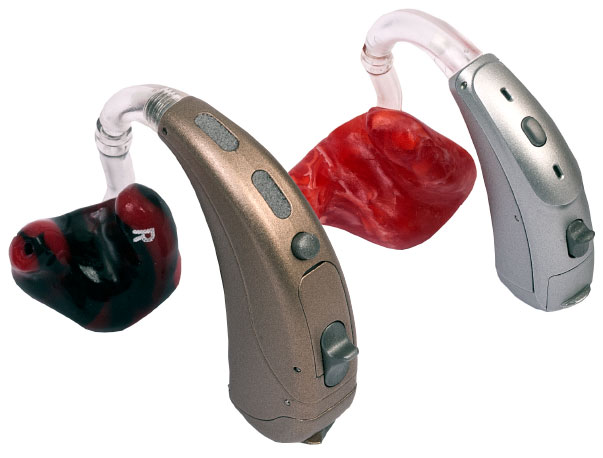You may have seen several different styles of hearing aids before that go behind or in the ear! Only the behind-the-ear style is appropriate for babies and children.
Below are considerations that go into the recommendation of Behind-the-Ear (BTE) hearing aids for babies and children:
Behind-the-Ear (BTE) Hearing Aids
- Behind-the-ear hearing aids can be used for a wider range of hearing losses than in-the-ear hearing aids.
- Batteries for behind-the-ear hearing aids are larger and last longer than in-the-ear hearing aids.
- Behind-the-ear hearing aids are safer than in-the-ear hearing aids. Behind-the-ear hearing aids have a soft plastic earmold that fits inside the ear canal. In-the-ear hearing aid cases are made from hard plastic that, if damaged by play, may hurt a child's ear canal.
- Children's ears grow rapidly during the early childhood years. With a behind-the-ear hearing aid, the only part that needs replacing as a child grows is the earmold. An in-the-ear hearing aid requires that the entire hearing aid be sent in to the manufacturer for recasing, leaving the child without the hearing aid for weeks.
- BTE hearing aids connect with and work easily with
remote microphone systems to help children with hearing loss hear their teachers in the classroom better.
- With a larger hearing aid case there is more room for
special features that can be used as the child ages (e.g. program button, directional microphones, and Bluetooth compatibility).
- Behind-the-ear hearing aids come in more color options than in-the-ear hearing aids.
